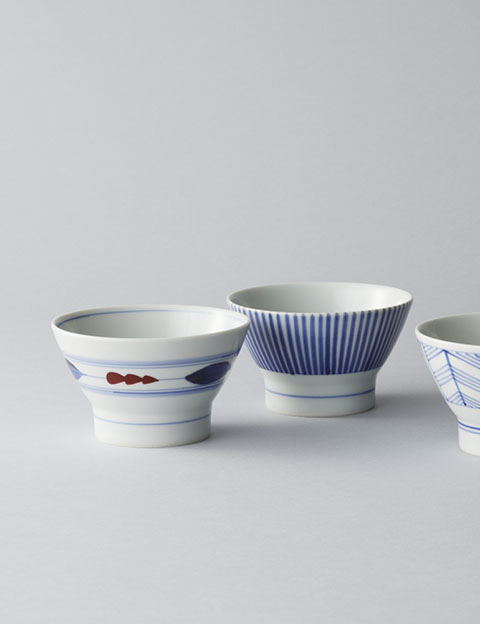TOBE Yaki (Porcelain)

In the middle of the 18th century, the local clan head thought it would be possible to improve clan finances by producing porcelain using locally found kaolin. Potters experienced in creating porcelain from present-day Nagasaki Prefecture were brought to the area, and this marked the beginning of porcelain making in Tobe.
From the end of the 19th century, there was an increase in the production of tableware for export to South East Asia. However, everything changed after World War II. Under advice from Soetsu Yanagi, the leader of the folkcraft movement, the area turned from the mass production of ceramics towards porcelain that preserved handmade, hand-painted roots.
Making the most of the warm qualities of the locally obtained porcelain stone base material, these practical yet appealing wares are characterized by tableware with bold hand-painted designs in a blue glaze, and celadon porcelain flower vases with soft coloring obtained through natural ash.
Feature
Common products include white porcelain dishes with blue patterns applied in bold brushstrokes, made from locally-sourced pottery stone, as well as flower vases in celadon porcelain colored with natural ash, combining practicality with warmth.
How to make
Pottery stones found locally are crushed, mixed with water, reduced to mud and separated into clay used for pottery and other components that will be discarded. Mud that has been sorted this way is dried and made into pottery clay before being molded into shape on a potter’s wheel. The pieces are then coated with a paint called gosu that turns blue when fired, glazed and fired at 1,300°C.

